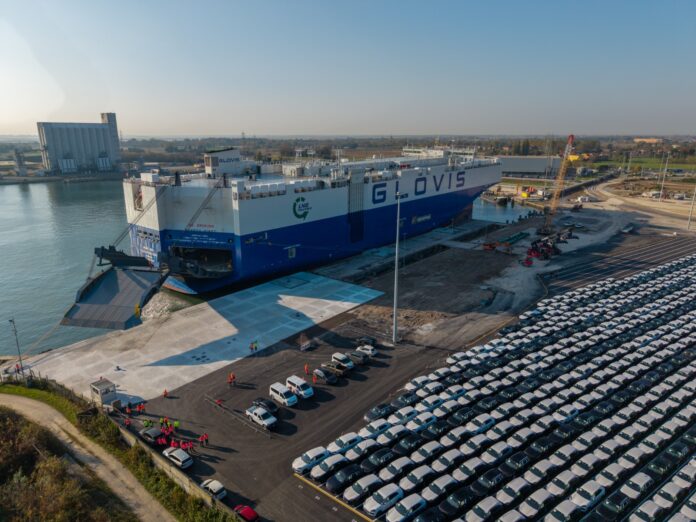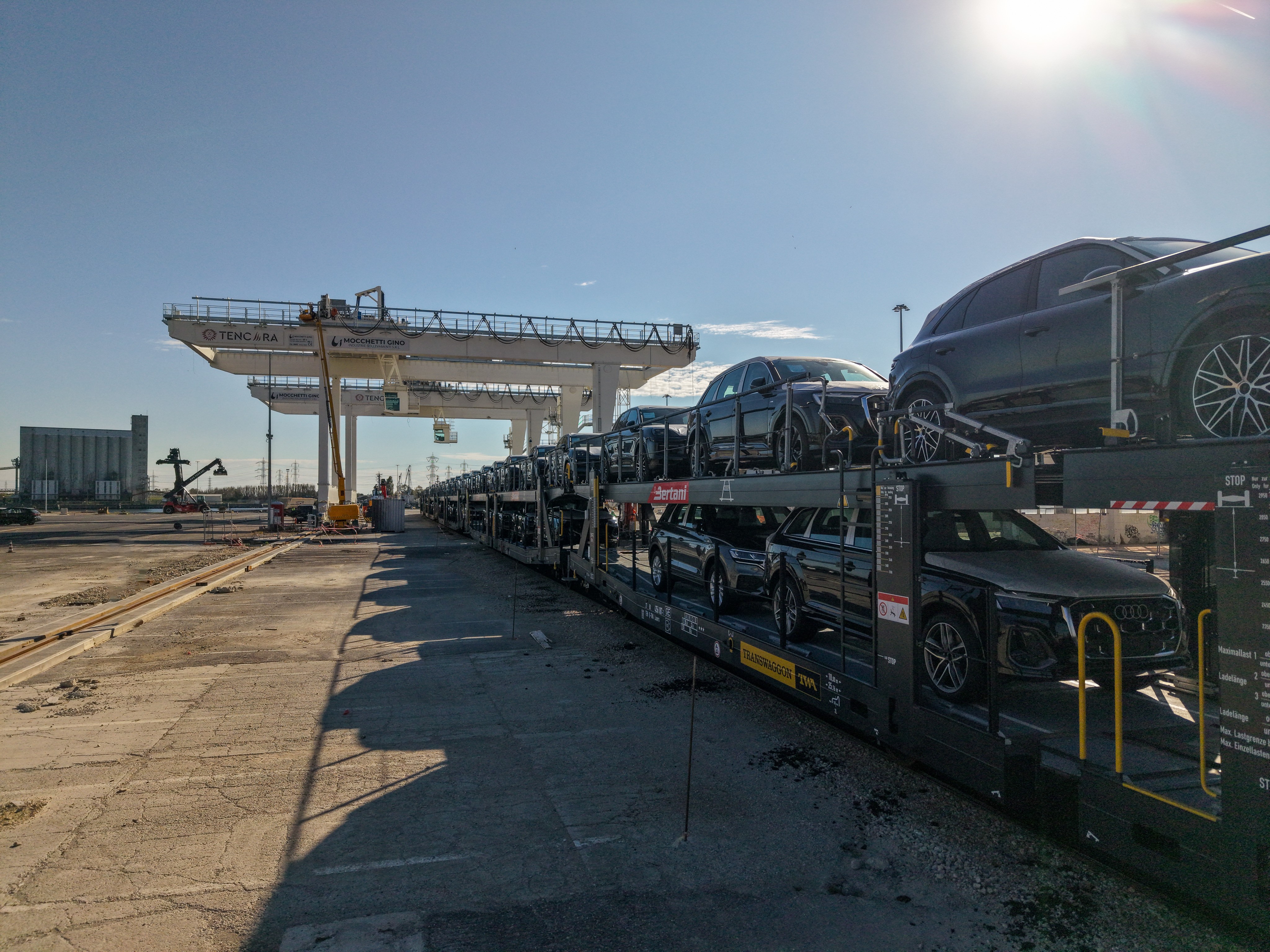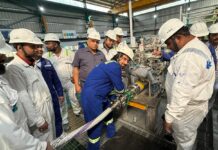
The Port of Venice strengthens its role as a key logistics hub. It connects Central and Eastern Europe with Far East markets. Today, a new service began, linking Volkswagen’s Bratislava plant in Slovakia with Chinese ports.
Vehicles leave the Bratislava plant by train to Tencara Terminal at Porto Marghera. There, they are staged on new yards and loaded onto ships operated by Glovis and Cosco.
The service starts with one vessel every 15 days. By January 2026, it will run once a week, supported by about 20 train arrivals each week. At full capacity, the port will handle around 100,000 vehicles annually. Over 90% of the transport uses trains, reducing CO₂ emissions. Transit time to China is about 30 days.

Tencara Terminal upgraded a previously unused site. It now connects to the railway and handles logistics efficiently. The Simplified Logistics Zone (ZLS) eased customs and administrative procedures, helping new manufacturing and logistics activities start quickly.
The terminal built a new quay of nearly 300 meters to moor large ships. It also developed 27 hectares of logistical yards. These upgrades provide efficient ship-to-train operations. Volkswagen and other automakers can now manage fully intermodal logistics.
Matteo Gasparato, Extraordinary Commissioner of the North Adriatic Sea Port Authority, said, “These results show Venice Port’s potential. The ZLS attracts investment and creates economic opportunities. Our ongoing infrastructure projects will improve railway and intermodal traffic. Venice can now compete in European markets and grow further.”
Peter Hörndlein, Volkswagen Group Logistics Managing Director, added, “Venice is a strategic port for our group. It shortens transit times and supports environmental sustainability. I thank the port authority and terminal for their collaboration. We look forward to a bright future for the Port of Venice.”





